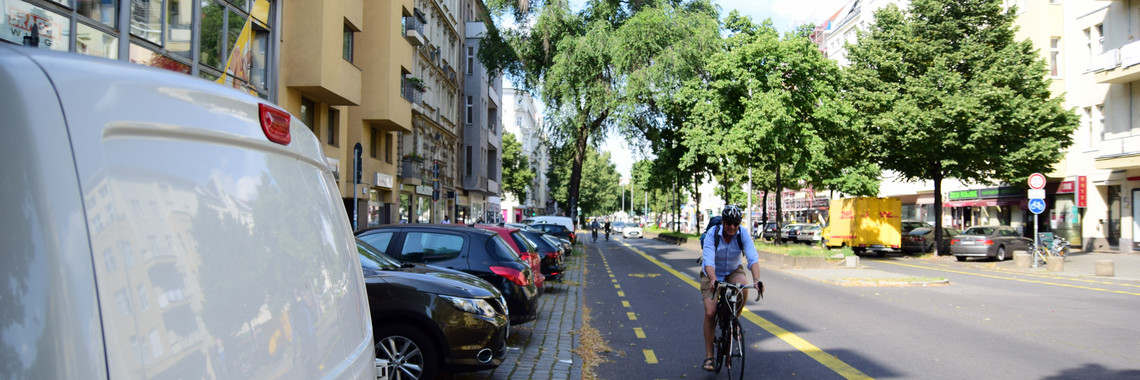Brief description of the study area
Sections of the 3.6 kilometre stretch of Neue Kantstrasse and Kantstrasse are densely lined with residential and commercial buildings. It is a major road with two to three lanes in each direction and a grassed central reservation. The western part is dominated by a cross-section of the road with two lanes in each direction and adjacent parking bays on both sides. The eastern part of the traffic axis is mostly a three-lane road in each direction, including the respective parking strip. Initial markings for a pop-up cycle lane were made on both sides of the road at the end of April 2020. In summer 2020, the longest pop-up cycle lane in Germany, 3.6 kilometres in each direction, was completed.
Further information and a detailed description of the study area can be found in our report.
Results
From January 2019 to February 2020, the volume of traffic on Kantstrasse averaged 20,982 motor vehicles per day. With the establishment of the pop-up cycle lane, the volume of motor vehicles has fallen by 22 percent.
From January 2019 to February 2020, daily movements of cyclists on Kantstrasse averaged 1,542. With the introduction of the pop-up cycle lane in April 2020, the number of cyclists increased significantly to 5,125 per day. This corresponds to an increase in cycle traffic of 232%.
Air quality has also improved significantly at various measuring points along Kantstrasse. NO2 pollution has decreased by 9 to 14.5 µg/m³, which is more significant than at comparison points: At four air quality measurement containers without a change in the traffic situation, NO2 pollution decreased by 6.9 µg/m³ in the period under consideration. This reduction is partly due to the Corona pandemic. The measurements along Kantstrasse show that the introduction of the pop-up cycle lane along Kantstrasse has contributed to a significant improvement in air quality – far beyond the city-wide trend. The contribution of the pop-up cycle lane to NO2 reduction can be estimated at 3.0 to 7.6 µg/m³.

